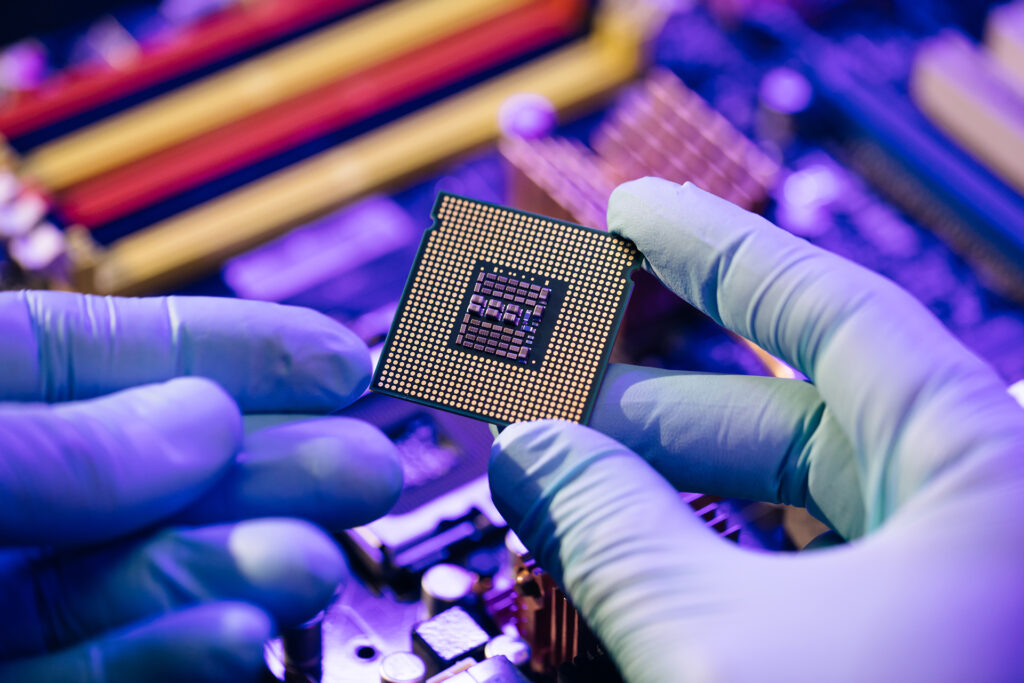In 2020, COVID hit the global economy like a ton of bricks. Lockdowns induced a global slowdown and disrupted supply chains. Not only toilet paper but also semiconductors were in short supply.
A 2021 commentary by the Boston Consulting Group (BCG) tells us that the US is the leader in research and development. Thanks to its top-class universities, fantastic talent pool, vast capital, innovative culture and extraordinary ecosystem, the US dominates “electronic design automation (EDA), core intellectual property (IP), chip design, and advanced manufacturing equipment.”
When it comes to manufacturing, which is referred to as fabrication in the industry, East Asia is top dog. Gone are the days of Fairchild when a group of eight brilliant engineers could walk off to launch the modern semiconductor industry in Silicon Valley. Now, manufacturing semiconductors needs massive capital investments. New foundries can “cost between $10-$20 billion and can take three to five years to build.”
To run such a capital-intensive industry, government backing helps. So does robust infrastructure and a skilled workforce. BCG rightly tells us that East Asia has all these ingredients to make its semiconductor industry thrive. China, South Korea, Japan and Taiwan have followed strong industrial policies, backing the semiconductor industry as a national priority. The US, where this industry began, now makes a mere 12% of the world’s semiconductors.
Taiwan’s Extraordinary Success in Semiconductors
In assembly, packaging and testing, China leads because of its cost advantage. Its neighbors make more advanced stuff. As per BCG, “all of the world’s most advanced semiconductor manufacturing capacity—in nodes below 10 nanometers—is currently located in South Korea (8%) and Taiwan (92%).” According to some, Taiwan is the Mecca of the semiconductor industry.
The biggest success story in the country is Taiwan Semiconductor Manufacturing Company (TSMC). It is the largest contract chipmaker in the world. In 2021, Kathrin Hille of The Financial Times reported about a TSMC plant that would make 3 nanometer semiconductor chips, which would be 70% faster and more power efficient than the most advanced in production at the time. TSMC has a history of making big investments that take a while to generate returns. In 2021, it budgeted $25-28 billion for capital investment. Competitors in the US have struggled to keep up because Wall Street forces them to focus on quarterly earnings and, until the 2022 CHIPS Act, the government offered few goodies.
TSMC has also invested wisely. It has plowed money into developing cutting-edge technology. The company has constructed giant fabrication plants, known as “fabs.” Hille’s 2021 reportage described a fab that measured 160,000 square meters, the equivalent of 22 football (soccer) fields. TSMC has not only focused on economy of scale but also efficiency of operations. The company achieves 95% yield in its factories. This means that 19 out of the 20 chips it makes are perfect.
The success of TSMC and other Taiwanese semiconductor companies owes a great deal to the national culture. Taiwan’s rigorous education system churns out high-quality electrical engineers and excellent technicians. The proverbial East Asian work ethic also helps. Employees work extraordinarily hard to maintain high production standards.
So far, location has helped too. Since Deng Xiaoping’s 1978 economic reforms, China has grown spectacularly. After joining the World Trade Organization in 2001, the Middle Kingdom has become the factory of the world. It is the largest manufacturer of electronics. As China’s next door neighbor, Taiwan’s location made the country an ideal location for semiconductor manufacturing and a strategic hub for the industry.
Geopolitical Typhoons Threaten Taiwan
Taiwan’s location and success are both a blessing and a curse. As mentioned above, location played a part in Taiwanese success. It has played a part in making the country integral to the semiconductor global supply chain. This global reliance on Taiwan might compel the US to support this breakaway island more robustly against China. Yet this threat comes precisely because Taiwan is next door to China and the legacy of a civil war that began in the 1930s divides the two.
In 1949, the Chinese Communist Party (CCP) emerged triumphant. Its rival, the Kuomintang (KMT), fled Mainland China and took refuge in Taiwan, which they named as the Republic of China (ROC). The CCP-led People’s Republic of China (PRC) believes in the One-China principle and seeks eventual “unification” with ROC. In Beijing’s eyes, Taiwan is a renegade province that must return to the fold just as Hong Kong.
Increasingly, the Taiwanese do not find reunification a palatable idea. The 1992 Consensus that kept tempers under control is now fraying. This agreement allowed the CCP and KMT to kick into the long grass the tricky question of which of their two governments was the legitimate, exclusive representative of “China.” Instead, both of them focused on more immediate practical matters.
Unlike China, Taiwan is a rambunctious democracy of 23 million people. In 2016, President Tsai Ing-wen, led her Democratic Progressive Party (DPP) to victory. She has refused to endorse the 1992 Consensus. This has caused great offense to President Xi Jinping who has brought back a Mao-style personality cult to China. Under him, China has become ultranationalist and hyper-aggressive. In recent years, Beijing’s “wolf warrior” diplomacy has unleashed a torrent of online abuse, misinformation and disinformation. The temperature in the Taiwan Strait has been rising.
Top analysts in the US have been worrying about the superpower’s reliance on Taiwan. They argue this semiconductor superpower is a single point of failure. Therefore, the US must develop its semiconductor industry again. President Joe Biden and the Congress have taken note. As referred to earlier, the CHIPS Act was enacted last year. In the words of the White House, this legislation will “lower costs, create jobs, strengthen supply chains, and counter China.”
It is not only the US that is spending tens of billions of dollars on semiconductor production. The EU is also getting into the act. Japan and South Korea are investing as well. The 800-pound gorilla in the room is China. Beijing is putting in hundreds of billions of dollars to move up the semiconductor industry value chain—make complex high-value chips, not just simpler low-value ones. Such massive investments by competitor nations could threaten Taiwan’s current top dog status in the semiconductor industry.
There is another wrinkle for Taiwanese industry. The US has instituted a series of measures to choke off China’s access to cutting-edge semiconductor chips, technology and manufacturing equipment. Historians have drawn parallels between this measure to the US 1939-41 sanctions on Japan. As per Niall Ferguson, these “sanctions so boxed in the imperial government that in the end there seemed no better option than to gamble on surprise attack.” Cutting off China from semiconductor capability “is a lot like cutting Japan off from oil in 1941.” Beijing’s incentives to attack its island neighbor for its semiconductor fab plants have just increased and so have Taiwan’s headaches.
The views expressed in this article are the author’s own and do not necessarily reflect Fair Observer’s editorial policy.
Support Fair Observer
We rely on your support for our independence, diversity and quality.
For more than 10 years, Fair Observer has been free, fair and independent. No billionaire owns us, no advertisers control us. We are a reader-supported nonprofit. Unlike many other publications, we keep our content free for readers regardless of where they live or whether they can afford to pay. We have no paywalls and no ads.
In the post-truth era of fake news, echo chambers and filter bubbles, we publish a plurality of perspectives from around the world. Anyone can publish with us, but everyone goes through a rigorous editorial process. So, you get fact-checked, well-reasoned content instead of noise.
We publish 2,500+ voices from 90+ countries. We also conduct education and training programs
on subjects ranging from digital media and journalism to writing and critical thinking. This
doesn’t come cheap. Servers, editors, trainers and web developers cost
money.
Please consider supporting us on a regular basis as a recurring donor or a
sustaining member.
Will you support FO’s journalism?
We rely on your support for our independence, diversity and quality.





Comment